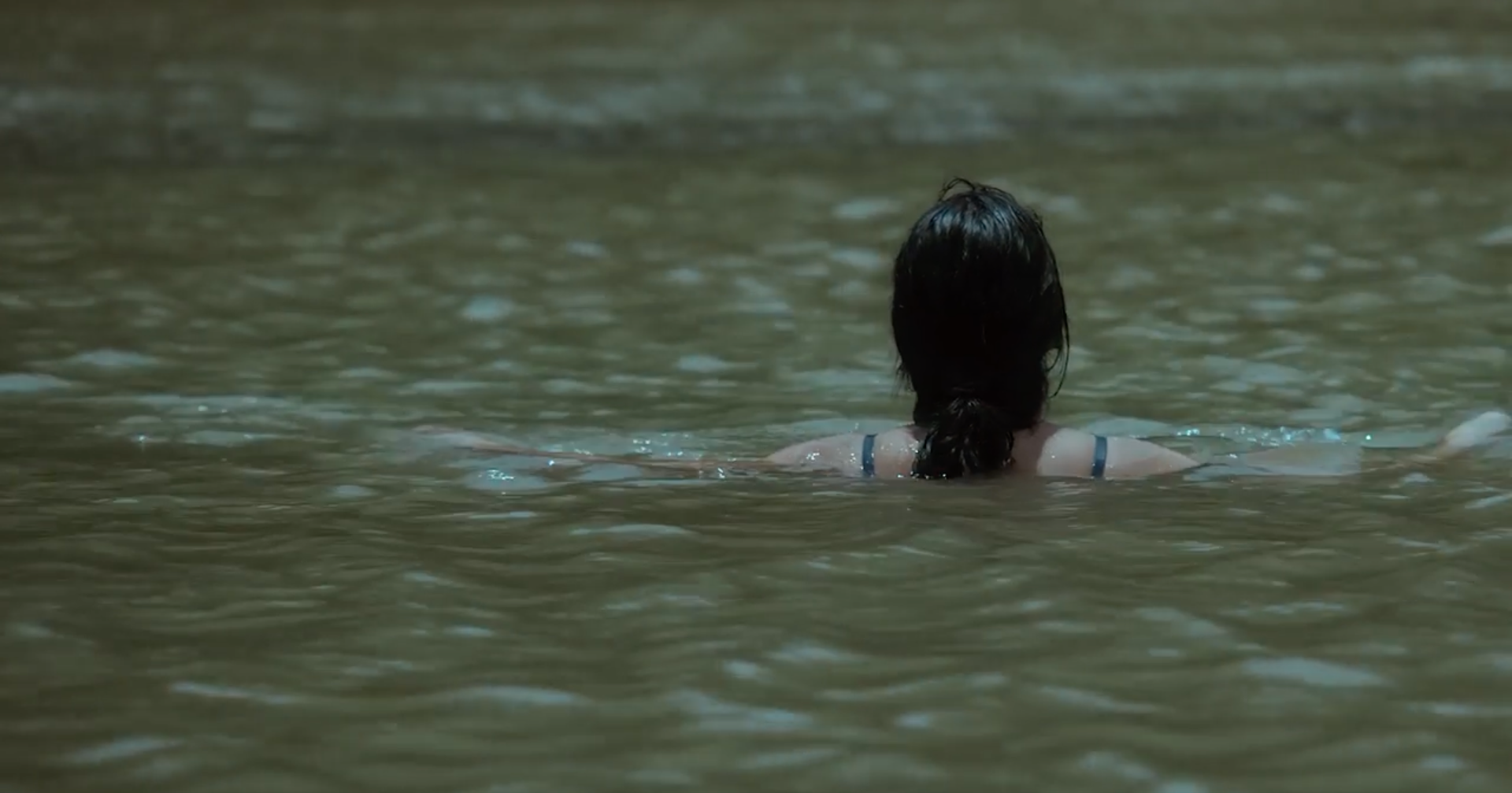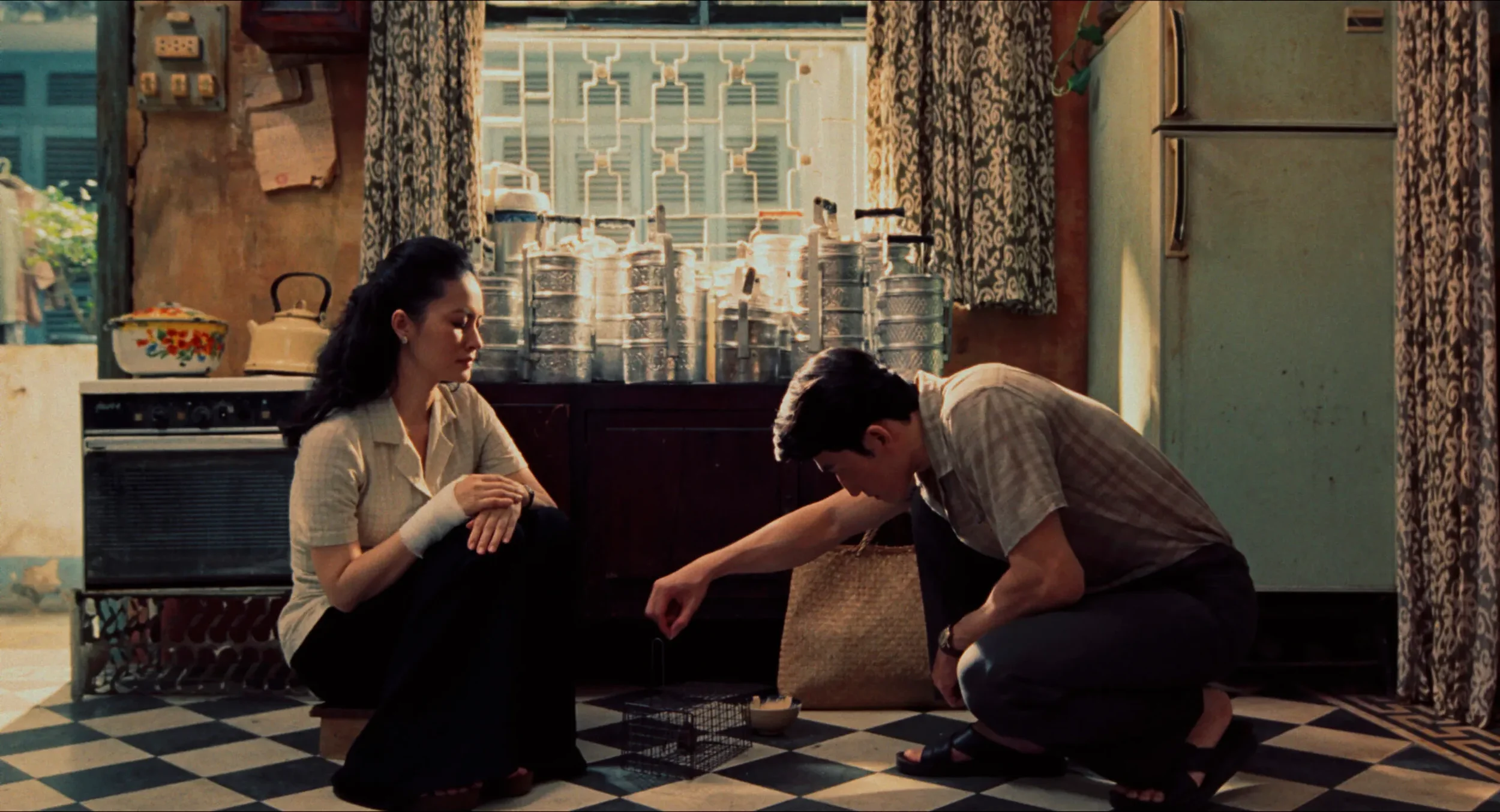‘QCShorts’ REVIEW: Wonderful Stories of Transformation
‘QCShorts’ REVIEW: Wonderful Stories of Transformation
This year’s QCinema Shorts competition offers some of the most intriguing local selections seen in cinemas this year. From a neanderthal in search of his missing passport to a teenage girl wading through nightmares and strange noises in search of her grandmother’s dead corpse, there’s a shared feeling of longing and searching rooted in all the selections. How do they each stand individually?
Luzonensis Osteoporosis
Glenn Barit (Cleaners, Aliens Ata) is no stranger to building wonderfully creative situations out of a very matter-of-fact prompt. In Luzonensis Osteoporosis, the director finds himself building around the recent discovery of the homo luzonensis in the Philippines. The discovery of which suggests among many things, the idea that our growth as a species is not exactly as linear as we thought it was. Glenn Barit proceeds to then expound on this idea by illustrating the disparity of growth one could achieve working outside the country, the differences in cultural development, and even hammering home the more domestic feelings of family, politics, and plenty of other ideas. This film is really backbreaking when it comes to the amount of concepts and ideas asked of the audience to carry in their mind as the film progresses. But I think despite having this feeling that it is a film to revisit more than once in the future, there’s an endless allure to be had from a film that starts with a neanderthal’s search for a missing passport and ends with his old home migrating alongside a flock of birds in the sunset.
With Luzonensis Osteoporosis, Glenn Barit truly creates something exquisite and special. Like with Aliens Ata, the film dominates its characters with an unseen presence and successfully captures its audience despite having a conflict that is difficult to spot on-screen. Having been able to film parts of it in Callao Cave, the same site where the first remains of the homo luzonensis were found back in 2007, made the film even more heartwarming and excitingly absurd to sit through, considering the lushness and vibrancy that is found in the editing and production quality of this film. Nothing else I can say here except that it is emotionally beautiful.
(As an aside, I should also mention that Quezon City’s Mayor, Joy Belmonte, also holds a master’s degree in Archaeology. I think it’s awesome that the opening short film organized in a city which she runs is sort of centered around the physical and social history of the Filipino people, and I think that’s cool.)
Ang Pagliligtas sa Dalagang Bukid
Jaime Morados’ Ang Pagliligtas sa Dalagang Bukid is the most straightforward story in this lineup, and also the thinnest when it comes to its emotional power as a film. Ang Pagliligtas sa Dalagang Bukid works as a sort of homage and reimagining in terms of what could it be like if we managed to save the first Filipino feature film. At least in this case, there’s a basic structure in the setting’s small theater, and the goal being to rescue the film reel from the fire that’s tearing down said small theater. The entire film is dictated by elements of silent film, but sparsely peppered with some faint audio in a few scenes. It’s not that this film feels totally devoid of any sincerity for the subject matter, but Jaime Morados’ entry into QCShorts feels the weakest of the selections for this year despite its creative choices.
The thing with any silent film is that crucially, its actors have to deliver everything by the face. After all, most of the focus is on how the actors visualize the situation involved. I think that Carlos Dala and Therese Malvar, though both quite seasoned thespians at this point, make the film’s core a little too modern for its liking. Some might say that there may have been a miscast considering the delivery of the entire story, and I’m inclined to agree because it does dampen the ability of the film to express its biggest points. Morada and the crew understand that despite our inability to save the first Filipino feature film, it’s at least important to acknowledge the continuous and oft-developing cycle of our local history. Just unfortunate that this point doesn’t stick the landing because of other elements tied to it.
Bold Eagle
Prior to Bold Eagle, I had previously remarked to myself during the writing of a rather mediocre assessment of Whammy’s 2013 feature, Islands, that his style feels eager to experiment with concepts, yet finds trouble in creating any bit of consistency. Well, Bold Eagle impresses me not just because Whammy manages to finally build something extremely cohesive from his mind, but does it in a way that endlessly assaults the senses (I mean, the plot revolves around a sex worker and sometimes his cat!) without feeling exhausted or repetitive. The exploratory nature of this film is certainly controversial, as the director remarks with his “MTRCB troubles” prior to screening his film. But trust me when I say it carries more depth and thoughtfulness than your average local sex drama.
The crux of Bold Eagle is rife with allusions, with the title alone being a play on “bold” and “Bald Eagle”, the latter being the national bird of the United States. That allusion serves to explore various themes on politics and familial distress (the father is suggested to have gone to Hawaii), while masking it in with the barrage of sex drivel that is as ubiquitous as ever. Of course, all of this is done through the examination of an anonymous alter’s life–a direction which works in the film’s favor because it conveys these underlying thoughts much better than Whammy’s prior works. There’s a lot of feeling bottled up in Bold Eagle, and that repressed lonely sexual promiscuity insanity SFW Gaspar Noé feeling makes this the most cohesive thing Whammy Alcazaren has directed so far.
Ngatta Naddaki Y Nuang?
With Ngatta Naddaki Y Nuang? (Why did the Carabao cross the Carayan?) Austin Tan’s short finds itself operating on themes of departure similar to its fellow Cagayan submission, Luzonensis osteoporosis. But where that film looks at a sweeping history of the Filipino identity in a pile of skeletal remains, this particular film is more personal, swapping bones for a carabao. The film attempts to explore the personal history by way of searching for a carabao that is associated with the main character, Oyo, thanks to a flood that drowned his younger brother years ago. There’s definitely some earnestness to be had with this film, but much of it is dry because parts of its story aren’t as pronounced or clearly defined as they ought to be.
While the synopsis suggests a story that is about the sentimentality of departure, much of the film also acts as a vehicle to personally bookmark the changes happening within the director’s town. The community being framed is there, but it feels more flat and dry than defining and memorable. It feels a little incoherent alongside the personal story, as the personal aspect of the story is centered around one particular event in time, whereas the character of the rural community is more continuous and operates despite personal tragedies involving Oyo’s family. Attempts to tie them together are there, but really the film in its totality could have been in a much better place given a better framing of sequences or a more pronounced characterization of the city.
the river that never ends
SINEGANG’s very own JT Trinidad graces QCShorts with his festival debut that is as solemn and as reflective as his prior works (Nothing, Like People, They Change Too, as if nothing happened). the river that never ends is centered around a transwoman named Baby, and through their daily routine skimming through companionship jobs and taking care of her dad we find a tapestry of moods attempting to tie together personal memories with the Pasig River. The concept is quite fresh, having previously encountered the structure in Lou Ye’s Suzhou River, an equally dense story whose love story is built around the defining architecture that sits by the Suzhou riverside. With the Pasig River, there’s a sweeping lot of history at risk of being shelved and washed away with the construction of an expressway that will cut through much of the river.
Stories like this are quite difficult to execute when it comes to declaring specific emotions and moods. Especially when, as the film illustrates, much of the moods coming out are just as reliant on Emerald Romero’s intimate acting as the scenery featuring the Pasig River. For the most part, it does seem to be effective, especially considering we’re used to seeing a JT Trinidad short be helmed by his soft-spoken voice overs more than anything else. It might be a little more difficult to absorb for other first-timers to the short film scene, as this film drapes itself with much of the dreary beauty more associated with Taiwanese and Chinese cinema more than anything. But I think the execution of it all, from the cinematography to the performance of Emerald Romero, works splendidly.
Mga Tigre ng Infanta
Rocky Morilla’s Mga Tigre ng Infanta might be the most difficult one to assess in this lineup because of the six, this is surprisingly the most abstract film despite carrying a very straightforward narrative in its plot: a girl named Katrina in Infanta, Quezon is searching for her grandmother’s body after it goes missing one night. In the background is the most popular political issue in the area: the presence and construction of the Kaliwa Dam which puts plenty of indigenous peoples (IPs) at risk of displacement, with the addition of environmental hazards brought by finishing the dam. While the film implies early on that there’s also rebel groups in the area aiming to protect affected communities by the dam, the film relinquishes any iota of gunfight in lieu of the mysticism tied to provinces such as Infanta.
The abstraction of Mga Tigre ng Infanta comes from the central motif: the tiger. This particular animal is impossible to find in the Philippines, as it went extinct hundreds and thousands of years ago. That being the note, the film uses this to convey a sort of mystical beauty and loss that could be associated with losing several communities in constructing the dam. That political thought has to be mentioned because the film reaches a point where it could be argued that the said commentary becomes something in the background, as opposed to being just as central to the film, like what I believe the director envisioned it to be. Despite that, it still suffers from that hazy confusion which pushes the film into something more abstract and difficult to appreciate beyond its entrancing conclusion. The cinematography employed in some scenes must be mentioned though, as this at least does wonders to make the film feel far larger than it ought to be (the director in a quick promo implies Katrina to be a projection of herself) which slightly helps in its personal and political messaging.
Summary
This year’s QCShorts certainly felt refreshing, in that the range of creativity espoused across all films in question reveals a creative pool of talent that is clearly present in today’s Philippine cinema. Ideas fresh and familiar, unique and exciting, they all come to play for this year’s roster of short films.
The 2022 QCShorts recently made its debut screening in QCinema last November 19, 2022. You can catch them again in succeeding runs in Gateway and the newly-relocated Cinema 76 until November 24.






















